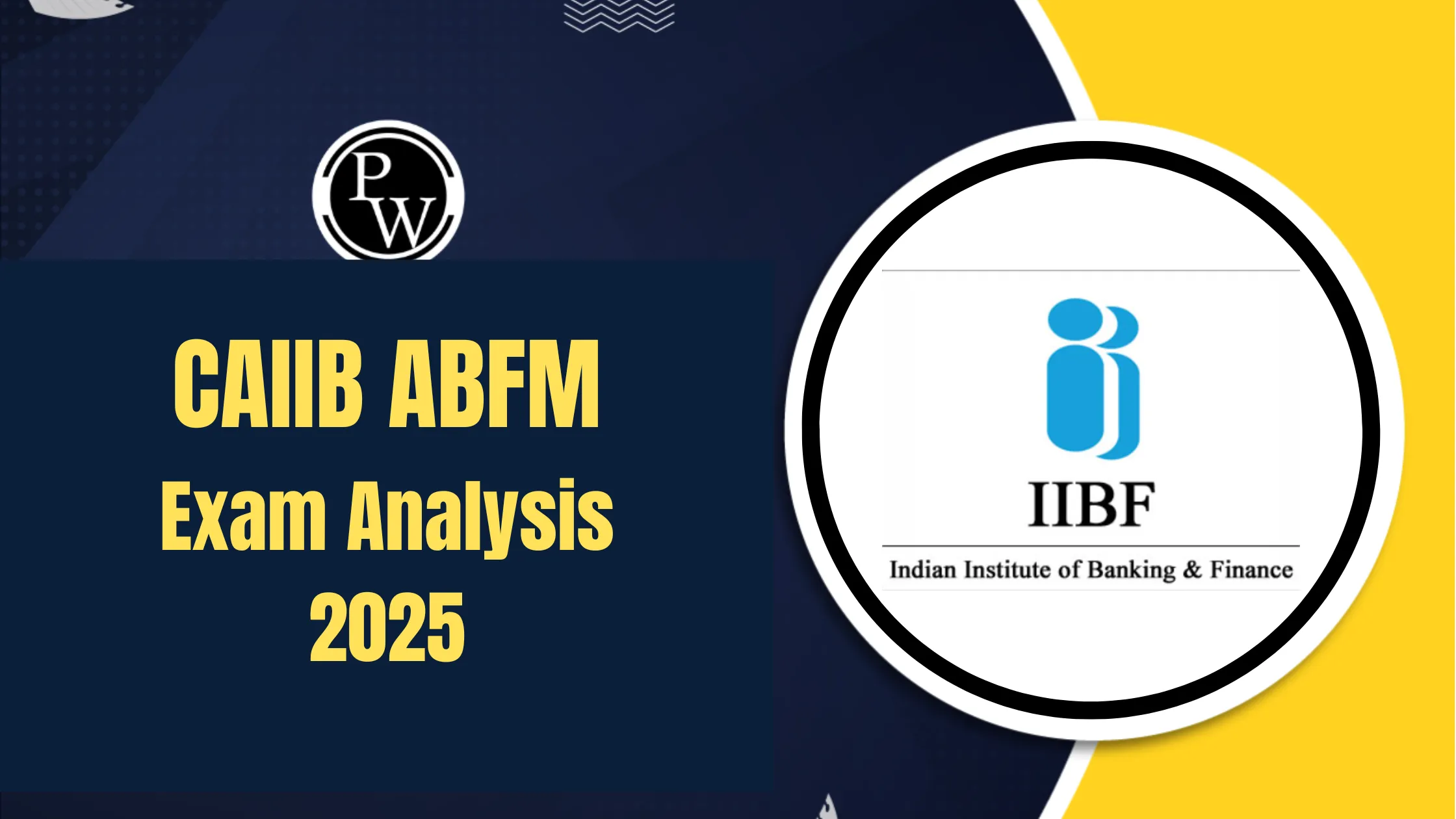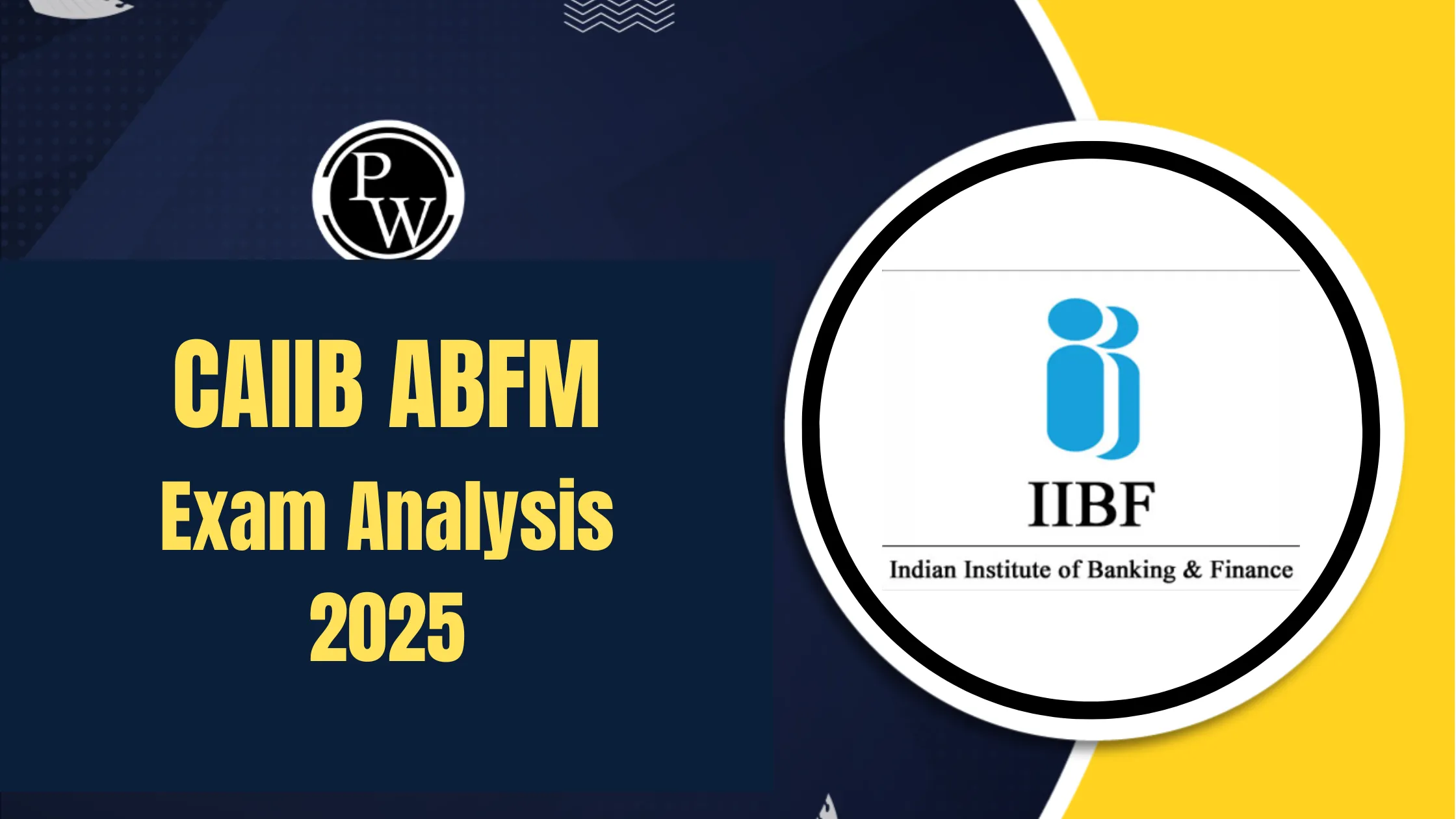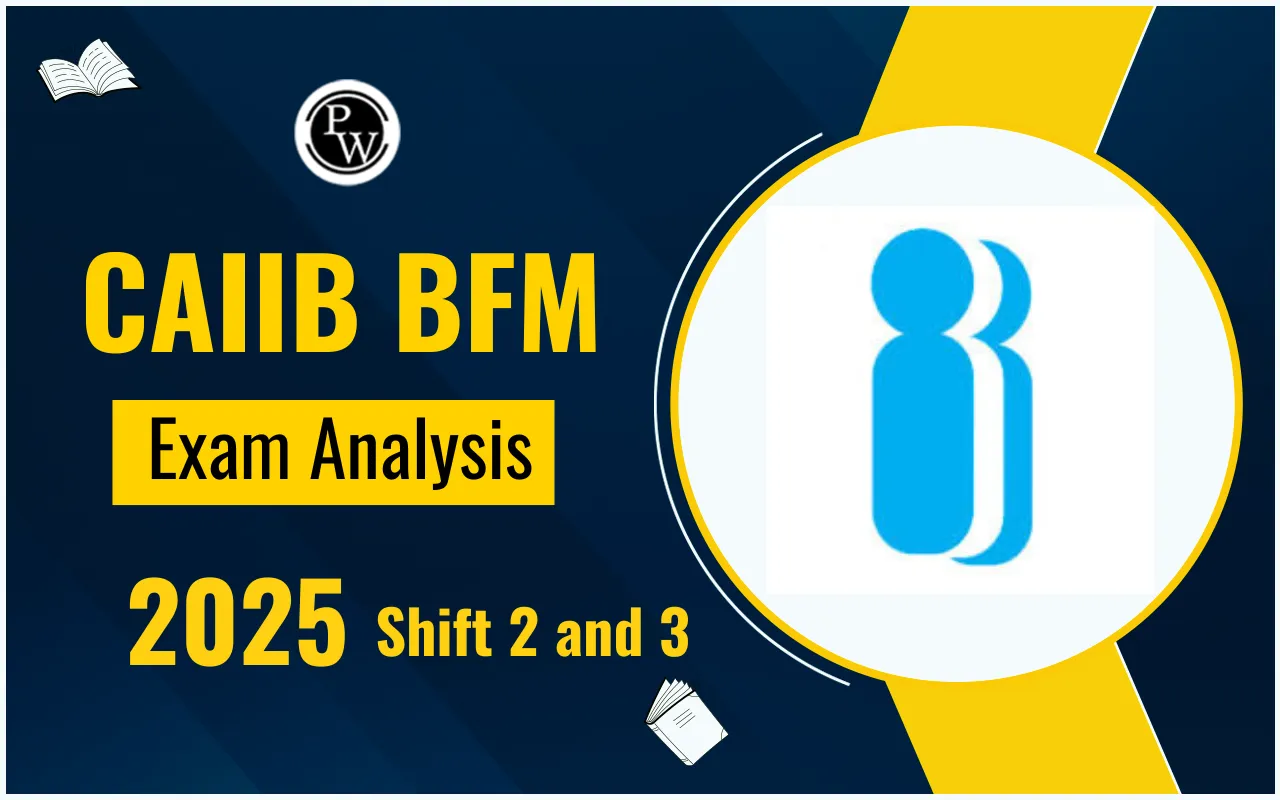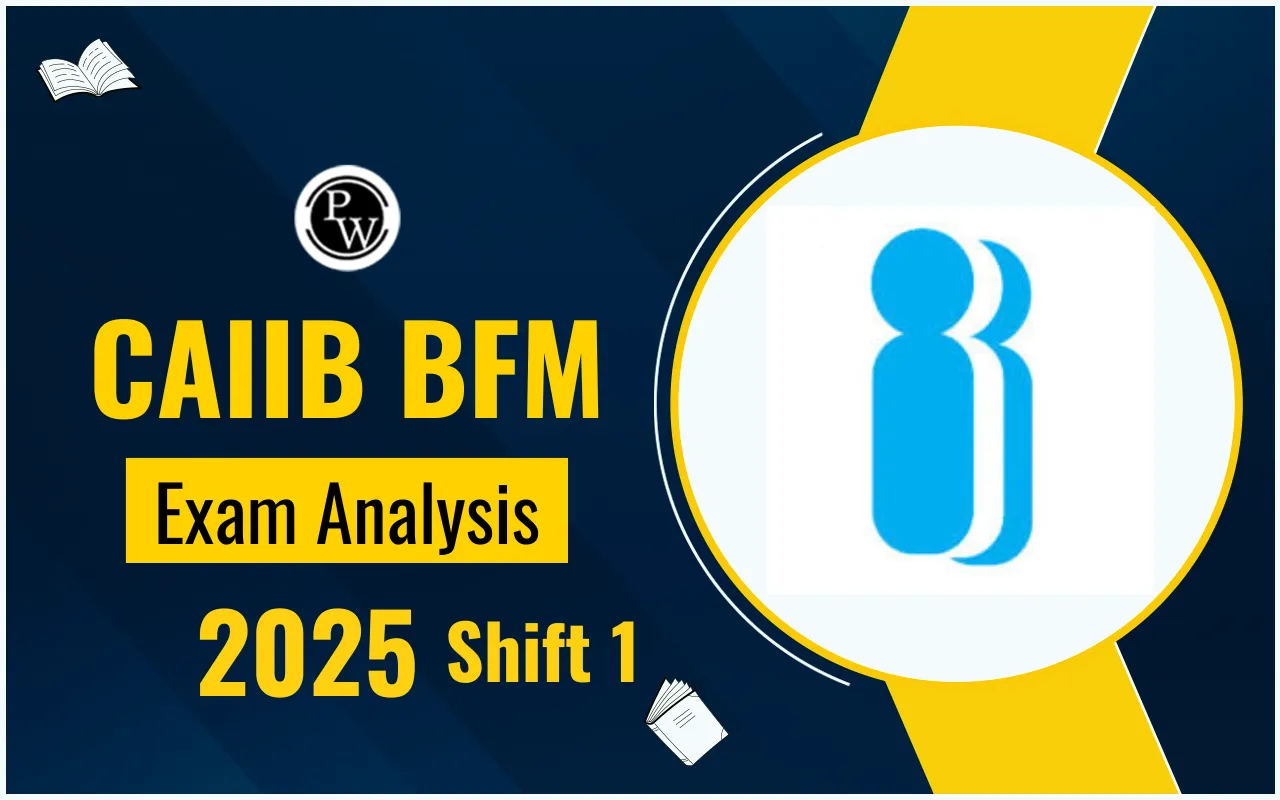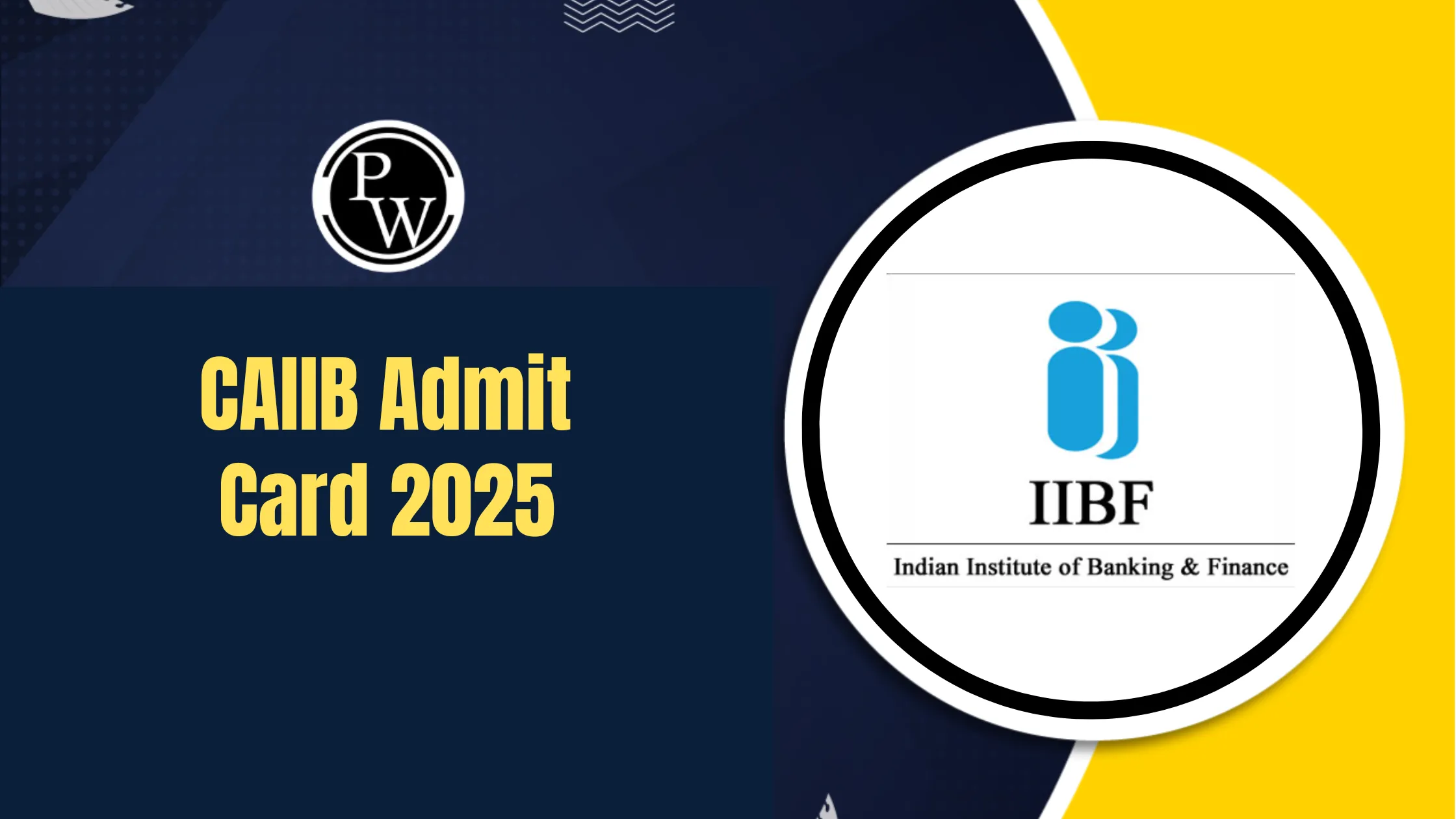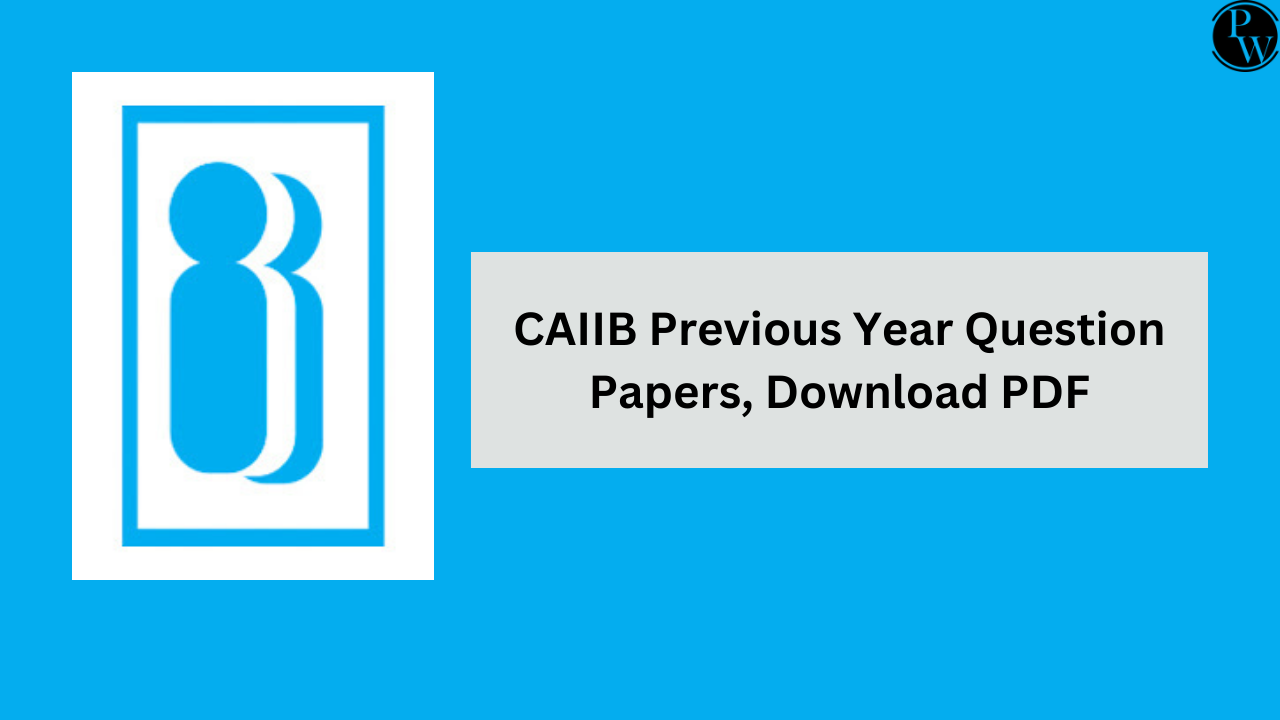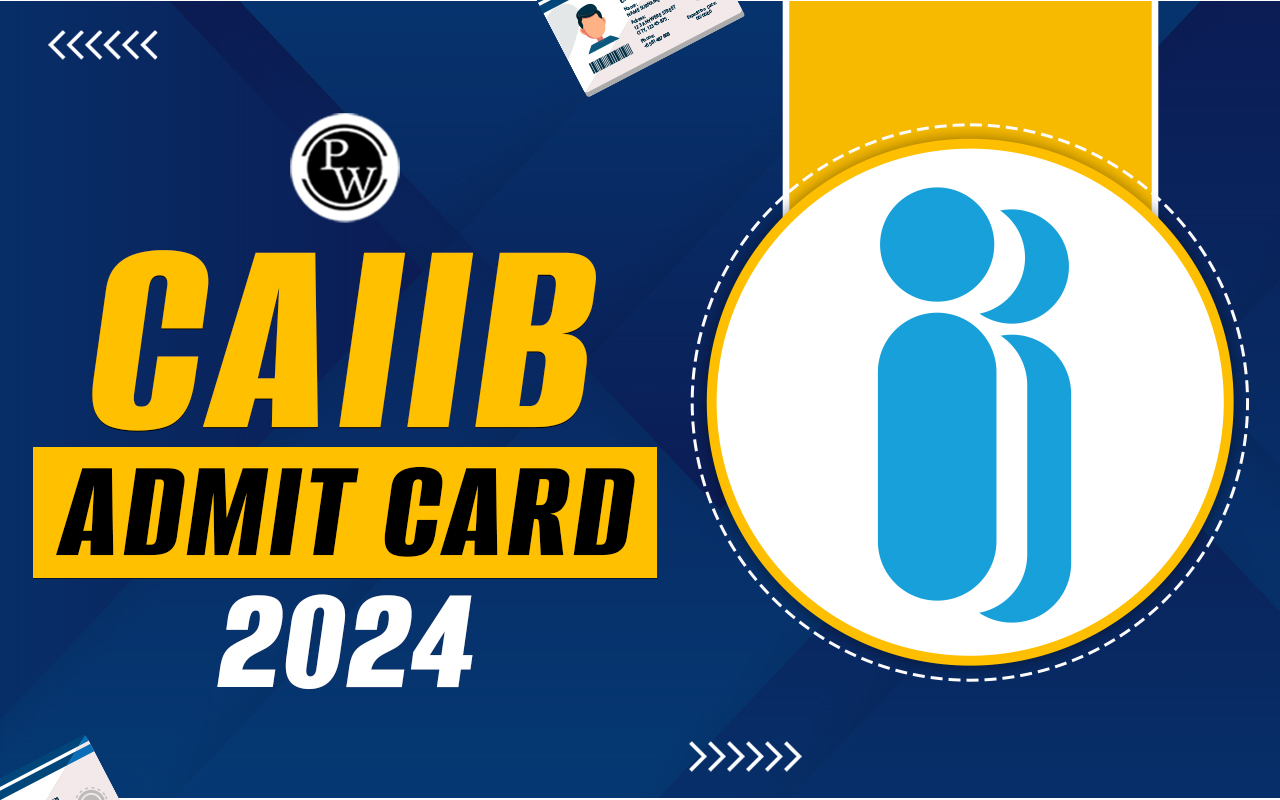
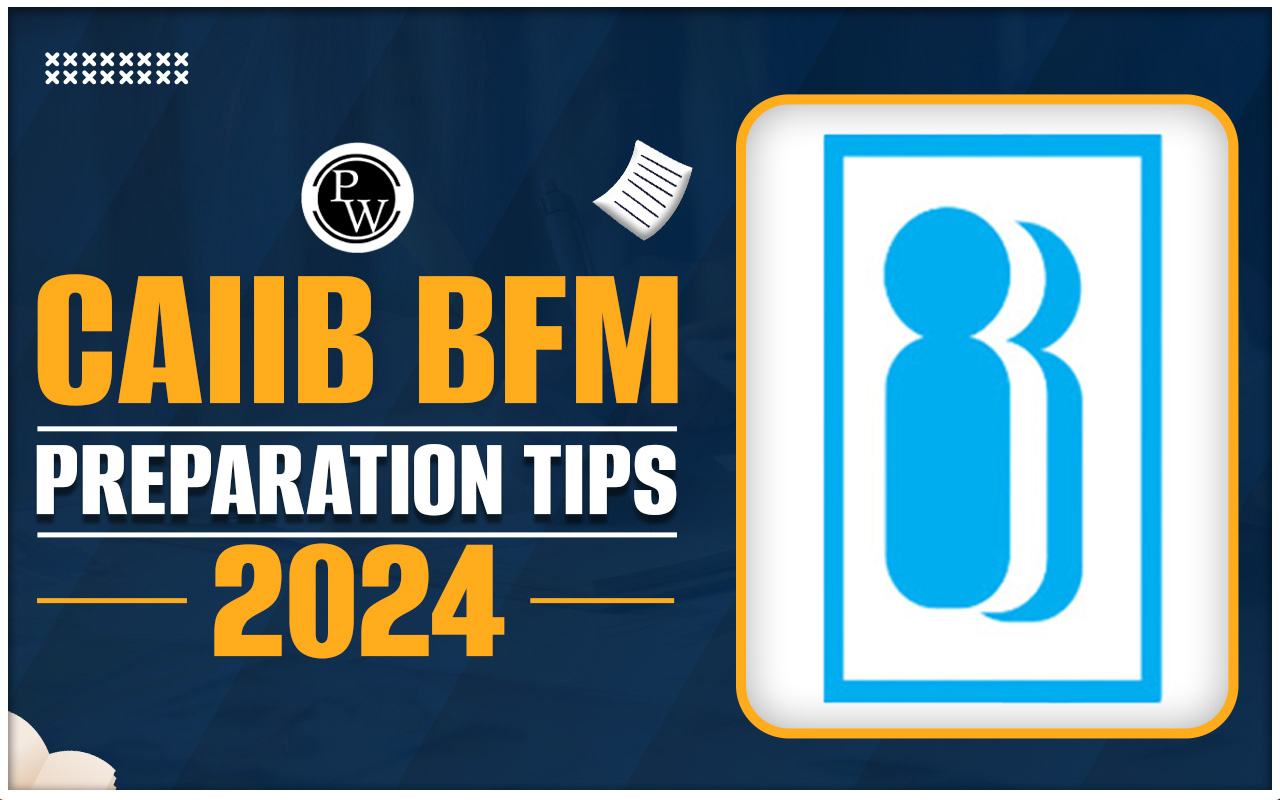
CAIIB BFM Preparation Tips 2024: The CAIIB BFM Exam of IIBF is considered to be the most difficult test. And why not when it is administered by IIBF and allows bankers to earn 2 increments simultaneously? Any sensible banker will understand the benefits of passing this CAIIB 2024 exam. To help CAIIB aspirants crack these CAIIB JUNE 2024 Exams, Study Sessions has developed a strategy to clear CAIIB BFM Exam 2024.
After reading this article, you will understand how to clear JUNE CAIIB BFM EXAM 2024 (Paper -2) with this particular company. This article is specially written to provide prospective CAIIBs with the important topics that appeared in the previous Certified Associates Banking Financial Management paper of the Institute of Bankers of India exam and the weight of the marks obtained by the candidate. Know the CAIIB BFM Preparation Tips 2024.CAIIB BFM Preparation Tips 2024
Bank Financial Management is one of the most important compulsory papers of CAIIB 2024. Candidates appearing for the BFM Paper must be aware of the detailed subject-wise syllabus to understand the questions properly. Below we have mentioned subject wise detailed syllabus of CAIIB BFM Paper.Module A: International Banking
| Units | Topics |
| Exchange Rates and Forex Business | Foreign Exchange – Definition and Markets Factors Determining Exchange Rates Exchange Rate Mechanism Foreign Exchange Dealing Room Operations Derivative Products RBI / FEDAI Guidelines Foreign Exchange Arithmetic – Concepts and Examples |
| Liberalised Remittance Scheme (LRS) and other Remittance Facilities for Residents | Capital Account Transactions and Current Account Transactions Key Sections under FEMA vis-à-vis Liberalized Remittance Scheme Permissible/Non-permissible Remittances under LRS Operational Guidelines Remittances under LRS for Current Account Transactions Tax Collected at Source (TCS) LRS vis-à-vis Capital Account Transactions Reporting Requirements under LRS |
| Correspondent Banking and NRI Accounts | Correspondent Banking – Accounts and other Service Nostro, Vostro and Loro Accounts Electronic Modes of Transmission/Payment Gateways – SWIFT, CHIPS, CHAPS, RTGS, etc.; NRI Banking; NRI accounts – Rupee and Foreign Currency Accounts Facilities to NRIs Advances to Non-Residents against Non-Resident Deposits Housing Loans to Non-Resident Indians |
| Documentary Letters of Credit | Definition of Letter of Credit Types of Letters of Credit Operations of Letter of Credit UCP 600 and Important Articles Liabilities Responsibilities and Rights of the Parties Documents under LC – Scrutiny Crystallization Follow-up for Bills under LC and Safeguards for Banks Risks Relating to LC Transactions; Standby Letter of Credit (Similar to Guarantees) Uniform Rules for Bank-to-Bank Reimbursements (URR–725) International Standard Banking Practice – 745 (ISBP 745) Incoterms Case Studies |
| Facilities for Exporters and Importers | Exchange and Trade Control Guidelines for Exporters Facilities for Exporters Export Finance; Gold Card Scheme for Exporters Export Data Processing and Monitoring System (EDPMS) Factoring and Forfaiting; Exchange and Trade Control Guidelines for Importers Import Finance; Import Data Processing and Monitoring System (IDPMS) Trade Credit – Supplier’s Credit and Buyer’s Credit Case Study on Export Finance |
| External Commercial Borrowings and Foreign Investments in India | External Commercial Borrowings – Concepts; ECBs – Other Operational Concepts Reporting Requirements Conversion of ECB into equity Foreign Investments Key Concepts Eligible Foreign Investors Eligible Investee Entities Eligible Investment Instruments Prohibited Sectors Rules Governing Pledge of Shares Operational Guidelines Snap Shot of Non-Debt Instruments (NDI) Rules List of Documents for Obtention of Foreign Investments List of Documents for Refund of Foreign Investments Risks in Foreign Trade – Role of ECGC Definition of Risk and Risks in International Trade Country Risk Export Credit Insurance in International Trade ECGC Role and Products ECGC Policies ECGC’s Products for Banks Other Aspects Relating to ECGC Policies and Guarantees Some of the Common “To Do Points” under ECGC Policies; Claims |
| Role of EXIM Bank, Reserve Bank of India, Exchange Control in India – FEMA, FEDAI and Others | EXIM Bank – Role Functions and Facilities Reserve Bank of India – Role and Exchange Control Regulations in India Foreign Exchange Management Act (FEMA) 1999 Role of FEDAI and FEDAI Rules Short Notes on Other Topics ECB and ADR/GDRs and FCCB; |
| International Financial Service Centres (IFSC), GIFTCity | Scope of IFSC in India Opportunities at Gift City Guidelines relating to setting up of IFSC Banking Units (IBUs) Role of IFSCA Regulatory Framework Permissible Activities at IBUs Relaxations for the FPI (Foreign Portfolio Investors) Entities at GIFT City |
| Technology in International Banking | Introduction to Digitization in International Banking – An Overview, Evolution of Technology in International Banking; Benefits and Limitations of Technology in International Banking; Digital Platforms in International Banking; FINTECH and evolution of FINTECH in International Banking; Delivery channels under FINTECH in International Banking; Sample process of International Trade Using Blockchain Technology; Challenges in FINTECH |
Module B – Risk Management
| Units | Topics |
| Risk and Basic Risk Management Framework | What is Risk? Linkages among Risk Capital and Return Why Risk Management? Basic Risk Management Framework |
| Risks in Banking Business | Risk Identification in Banking Business The Banking Book The Trading Book Off-Balance Sheet Exposures Banking Risks – Definitions |
| Risk Regulations in Banking Industry | Regulation of Banking Industries – Necessities and Goals The Need for Risk-based Regulation in a Changed World Environment Basel I: The Basel Capital Accord; 1996 Amendment to Include Market Risk Basel II Accord – Need and Goals Basel II Accord; Towards Basel III; Capital Charge for Credit Risk Credit Risk Mitigation Capital Charge for Market Risk Capital Charge for Operational Risk Pillar 2 – Supervisory Review Process Pillar 3 – Market Discipline Capital Conservation BufferLeverage Ratio Countercyclical Capital Buffer Systemically Important Financial Institutions (SIFIs Risk Based Supervision (RBS) |
| Market Risk | Market Risk – Concept Market Risk in Banks Market Risk Management Framework Organization Structure Risk Identification Risk Measurement Risk Monitoring and Control Risk Reporting Managing Trading Liquidity Risk Mitigation |
| Credit Risk | General Credit Risk Management Framework Organisation Structure Risk Identification Risk Measurement Credit Risk Control and Monitoring Credit Risk Policies and Guidelines at Transaction Level Credit Control and Monitoring at Portfolio Level Active Credit Portfolio Management Controlling Credit Risk through Loan Review Mechanism (LRM) Credit Risk Mitigation Securitisation Credit Derivatives (CDs) |
| Operational Risk and Integrated Risk Management | Operational Risk – General Operational Risk – Classification Operational Risk Classification by Event Type – Definitions Operational Risk Management Practices Management Overview and Organisational Structure Processes and Framework Risk Monitoring and Control Practices Operational Risk Qualification Operational Risk Mitigation Scenario Analysis Integrated Risk Management The Necessity of Integrated Risk Management Integrated Risk Management – Challenges Integrated Risk Management – Approach |
| Liquidity Risk Management | Liquidity Risk Management – Need & Importance Potential Liquidity Risk Drivers Types of Liquidity Risk Principles for Sound Liquidity Risk Management Governance of Liquidity Risk Management Liquidity Risk Management Policy, Strategies and Practices Management of Liquidity Risk Ratios in respect of Liquidity Risk Management Stress Testing; Contingency Funding Plan Overseas Operations of the Indian Banks’ Branches and Subsidiaries and Branches of Foreign Banks in India Broad Norms in Respect Of Liquidity Management Liquidity Across Currencies Management Information System Reporting to the Reserve Bank of India; Internal Controls |
| Basel III Framework on Liquidity Standards | Liquidity Coverage Ratio Liquidity Risk Monitoring Tools Net Stable Funding Ratio |
Module C – Treasury Management
| Units | Topics |
| Introduction to Treasury Management | The Concept Functions of Integrated Treasury The Process of Globalisation Evolving Role of Treasury as Profit Centre Organisation of Treasury |
| Treasury Products | Products of Foreign Exchange Markets Money Market Products Securities Market Products Domestic and Global Markets |
| International Equity and Debt Products | Regulatory Environment Global Depository Receipts Indian Depository Receipts External Commercial Borrowings Trade Credits Rupee Denominated Bonds |
| Funding and Regulatory Aspects | Reserve Assets: CRR and SLR The Liquidity Adjustment Facility (LAF) Payment and Settlement Systems |
| Treasury Risk Management | Supervision and Control of Treasury Market Risk and Credit Risk Risk Measures VaR and DurationUse of Derivatives in Risk Management |
| Derivative Products | Derivatives and the Treasury OTC and Exchange Traded Products Forwards, Options, Futures and Swaps Interest Rate and Currency Swaps Developments in Indian Markets and RBI Guidelines on Risk Exposure |
| Treasury and Asset-Liability Management | Meaning of Asset-Liability Management (ALM) Liquidity Risk and Interest Rate Risk Role of treasury in ALM Use of derivatives in ALM Credit risks and Credit Derivatives Transfer pricing, Policy Environment |
Module D – Balance Sheet Management
| Units | Topics |
| Components of Assets and Liabilities in Bank’s Balance Sheet and their Management | Components of a Bank’s Balance Sheet What is Asset Liability Management? Significance of Asset Liability Management Purpose and Objectives of Asset Liability Management ALM as Co-ordinated Balance Sheet Management |
| Capital Adequacy – Basel Norms | Scope of Application Pillar-1 – Minimum Capital Requirements Pillar 2- Supervisory Review Process Pillar 3 – Market Discipline; |
| Asset Classification and Provisioning Norms | Asset Classification Provisioning Norms |
| Liquidity Management | Definition Dimensions and Role of Liquidity Risk Management Measuring and Managing Liquidity Risk |
| Interest Rate Risk Management | Essentials of Interest Rate Risk Sources of Interest Rate Risk Effects of Interest Rate RiskMeasurement of Interest Rate Risk Interest Rate Risk Measurement Techniques Strategies for Controlling Interest Rate Risk Controls and Supervision of Interest Rate Risk Management Sound Interest Rate Risk Management Practices RBI’s Draft Guidelines on Interest Rate Risk in Banking Book |
| RAROC and Profit Planning | Profit Planning Risk Aggregation and Capital Allocation Economic Capital and RAROC |
CAIIB BFM 2024 Preparation Tips
A thorough understanding of the CAIIB BFM Syllabus should be developed and the exam weights and layout should be known.- Make a study plan with a daily schedule that allows you to complete all the material by the deadline. Focus on the important topics and collect relevant study materials from reliable sources including notes, previous year test questions, online resources, and Indian Institute of Banking and Finance (IIBF) publications.
- To familiarize yourself with the exam format, question types, and time management. , practice with mock tests and previous year's questions. To help you remember what you've learned, review the material again.
- Stay motivated, manage your time well, keep up with developments in the banking industry and ask for help when needed. Remember that a month is a limited time, so stay focused, stay optimistic, and use a systematic method to complete everything.
- A proactive strategy to pass CAIIB BFM June 2024 is to review and analyze mistakes made in exam practice and take corrective actions through revision. ask a mentor or experts for ideas or advice.
CAIIB BFM Preparation Tips 2024 FAQs
Q1. What are the CAIIB BFM Preparation Tips 2024?
Ans. You can get the complete outline of the CAIIB BFM Preparation Tips 2024 in the above article.
Q2. How do I start preparing for CAIIB BFM Exam?
Ans. Get the best books available for CAIIB BFM Exam or attend video courses and live lectures as having a good study resource will definitely help you crack the exam.
Q3. Can I clear CAIIB BFM Exam in first attempt?
Ans. Yes, you can clear CAIIB BFM Exam in first attempt.
Talk to a counsellorHave doubts? Our support team will be happy to assist you!

Check out these Related Articles
Free Learning Resources
PW Books
Notes (Class 10-12)
PW Study Materials
Notes (Class 6-9)
Ncert Solutions
Govt Exams
Class 6th to 12th Online Courses
Govt Job Exams Courses
UPSC Coaching
Defence Exam Coaching
Gate Exam Coaching
Other Exams
Know about Physics Wallah
Physics Wallah is an Indian edtech platform that provides accessible & comprehensive learning experiences to students from Class 6th to postgraduate level. We also provide extensive NCERT solutions, sample paper, NEET, JEE Mains, BITSAT previous year papers & more such resources to students. Physics Wallah also caters to over 3.5 million registered students and over 78 lakh+ Youtube subscribers with 4.8 rating on its app.
We Stand Out because
We provide students with intensive courses with India’s qualified & experienced faculties & mentors. PW strives to make the learning experience comprehensive and accessible for students of all sections of society. We believe in empowering every single student who couldn't dream of a good career in engineering and medical field earlier.
Our Key Focus Areas
Physics Wallah's main focus is to make the learning experience as economical as possible for all students. With our affordable courses like Lakshya, Udaan and Arjuna and many others, we have been able to provide a platform for lakhs of aspirants. From providing Chemistry, Maths, Physics formula to giving e-books of eminent authors like RD Sharma, RS Aggarwal and Lakhmir Singh, PW focuses on every single student's need for preparation.
What Makes Us Different
Physics Wallah strives to develop a comprehensive pedagogical structure for students, where they get a state-of-the-art learning experience with study material and resources. Apart from catering students preparing for JEE Mains and NEET, PW also provides study material for each state board like Uttar Pradesh, Bihar, and others
Copyright © 2025 Physicswallah Limited All rights reserved.

